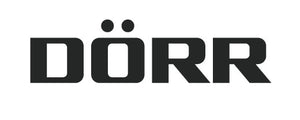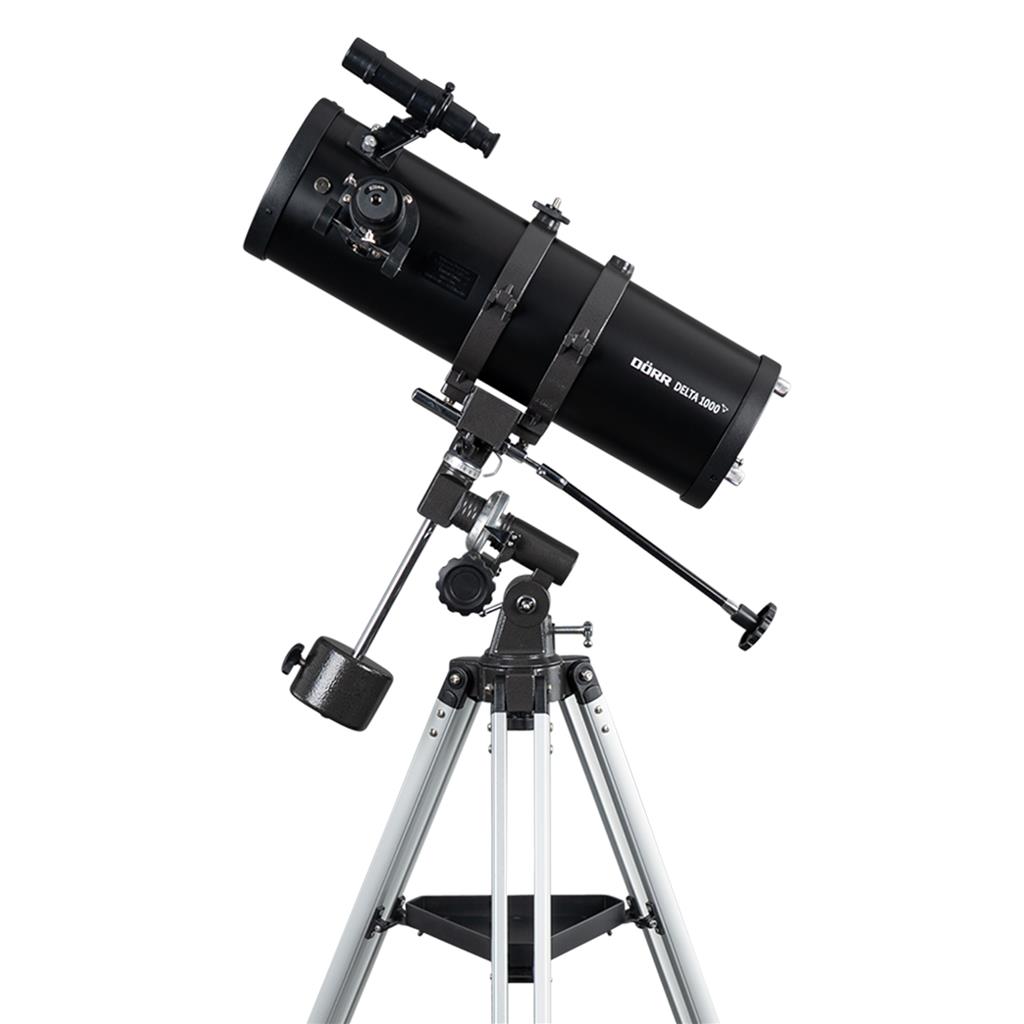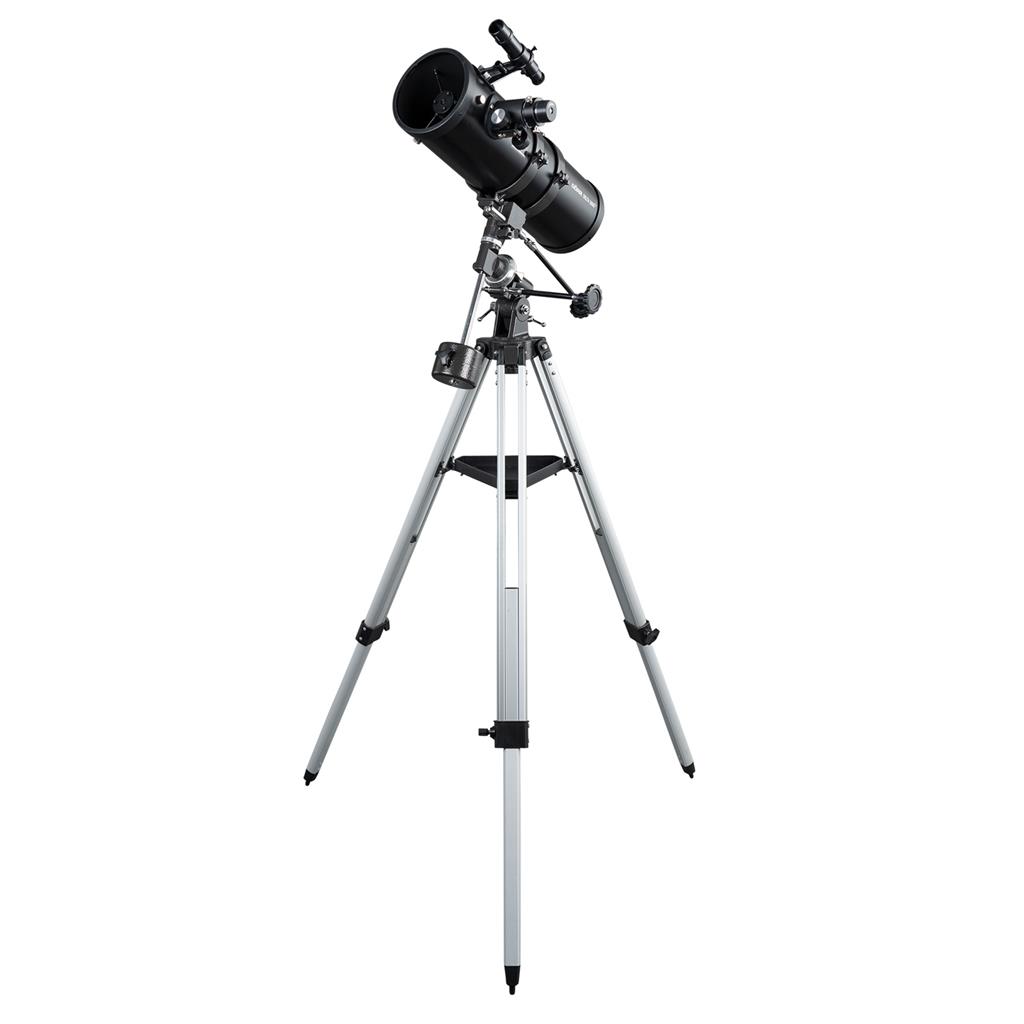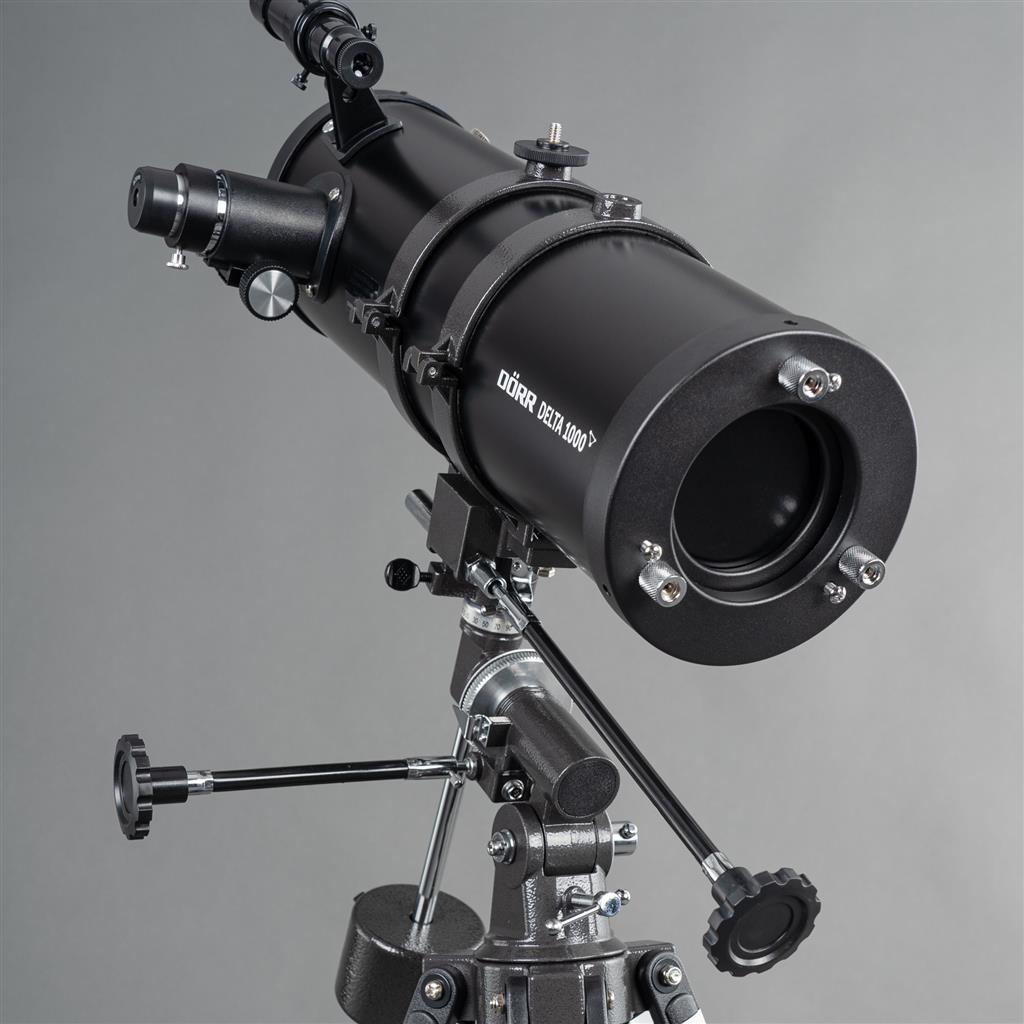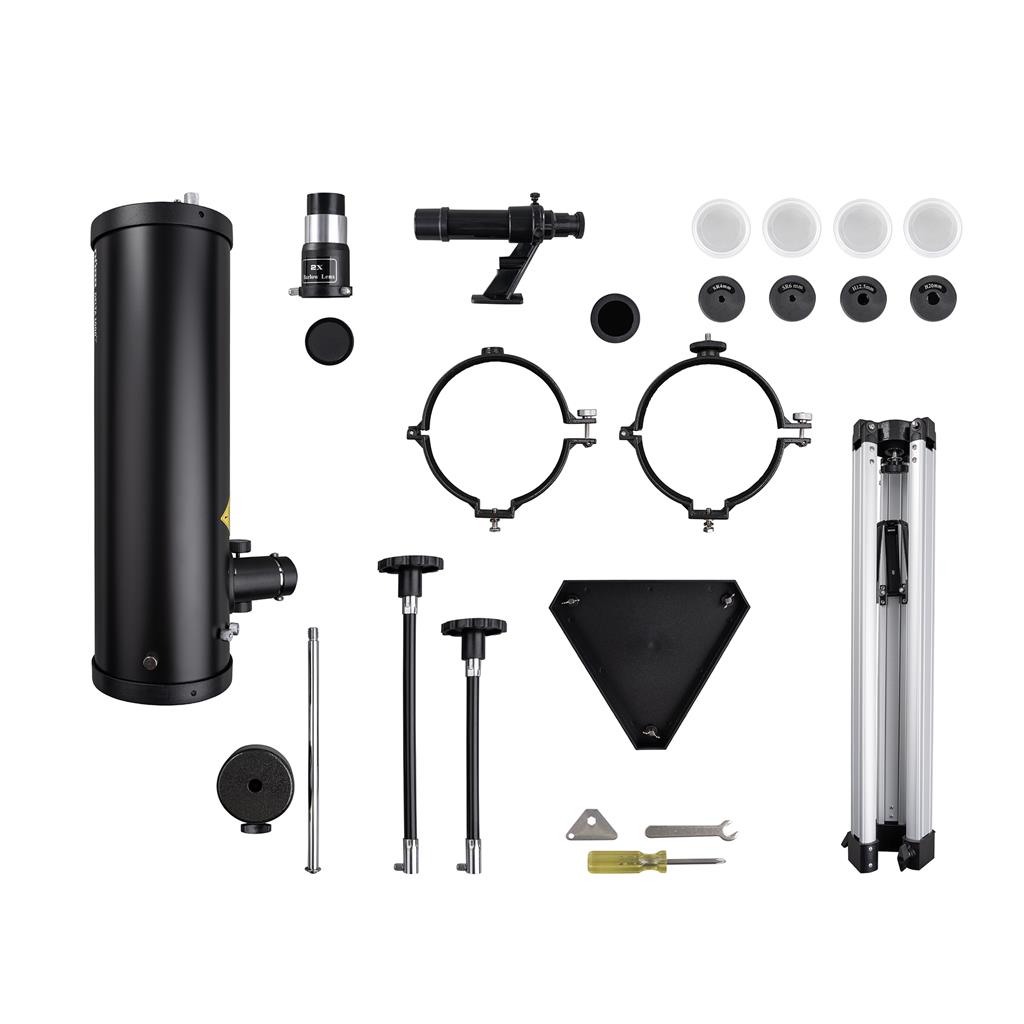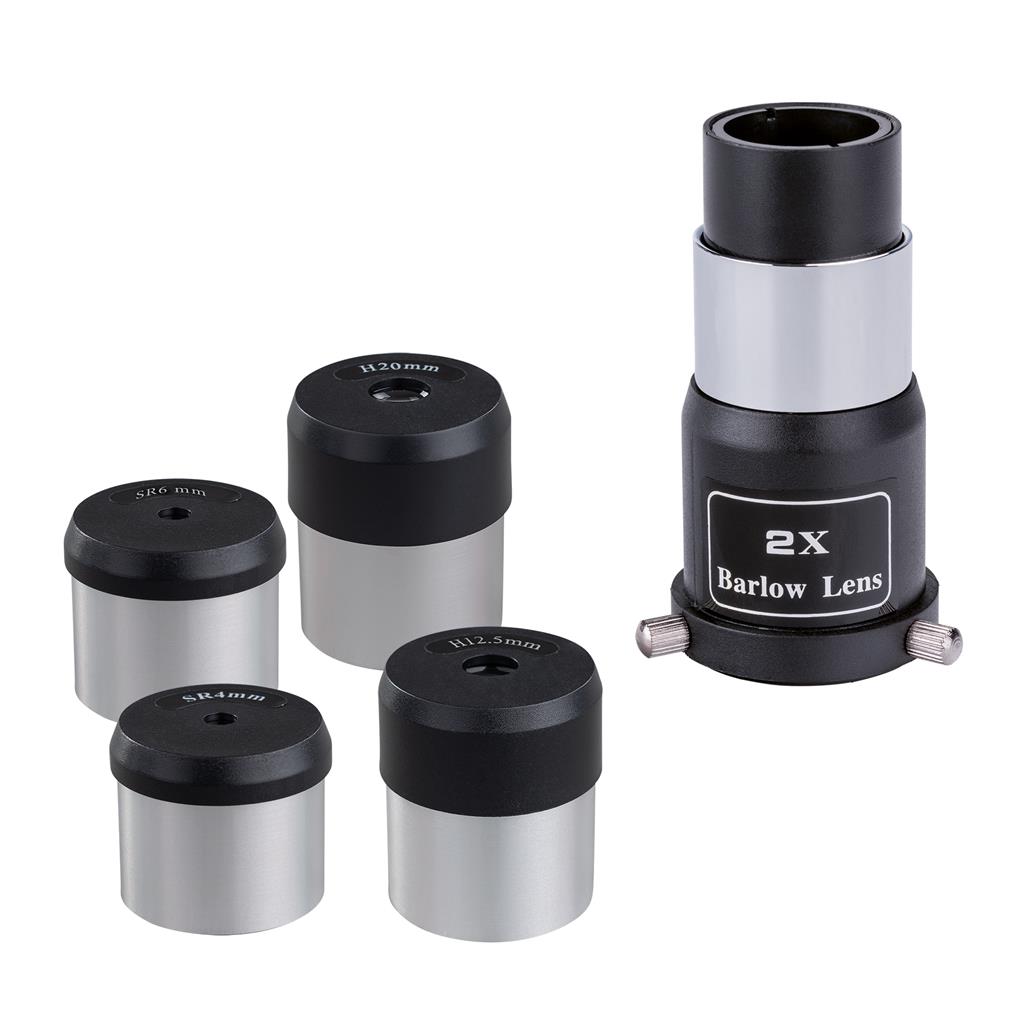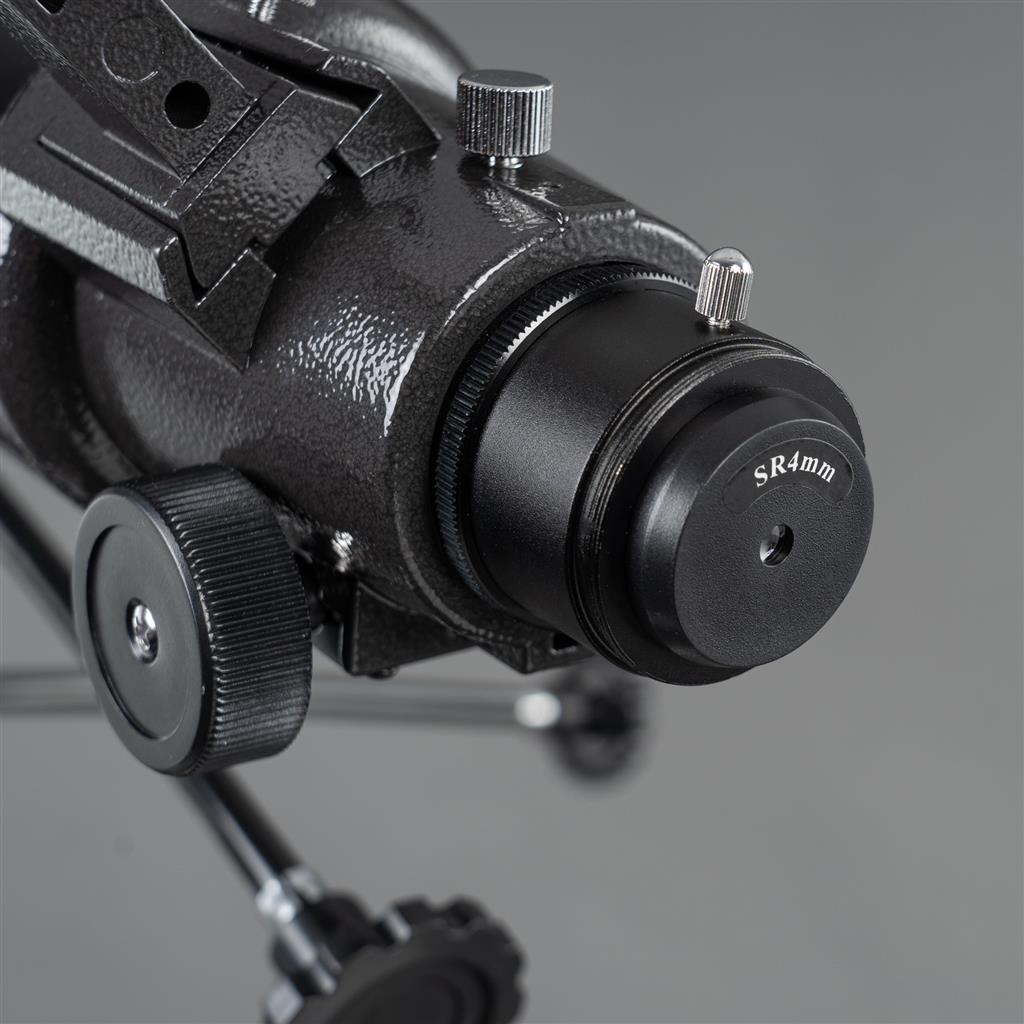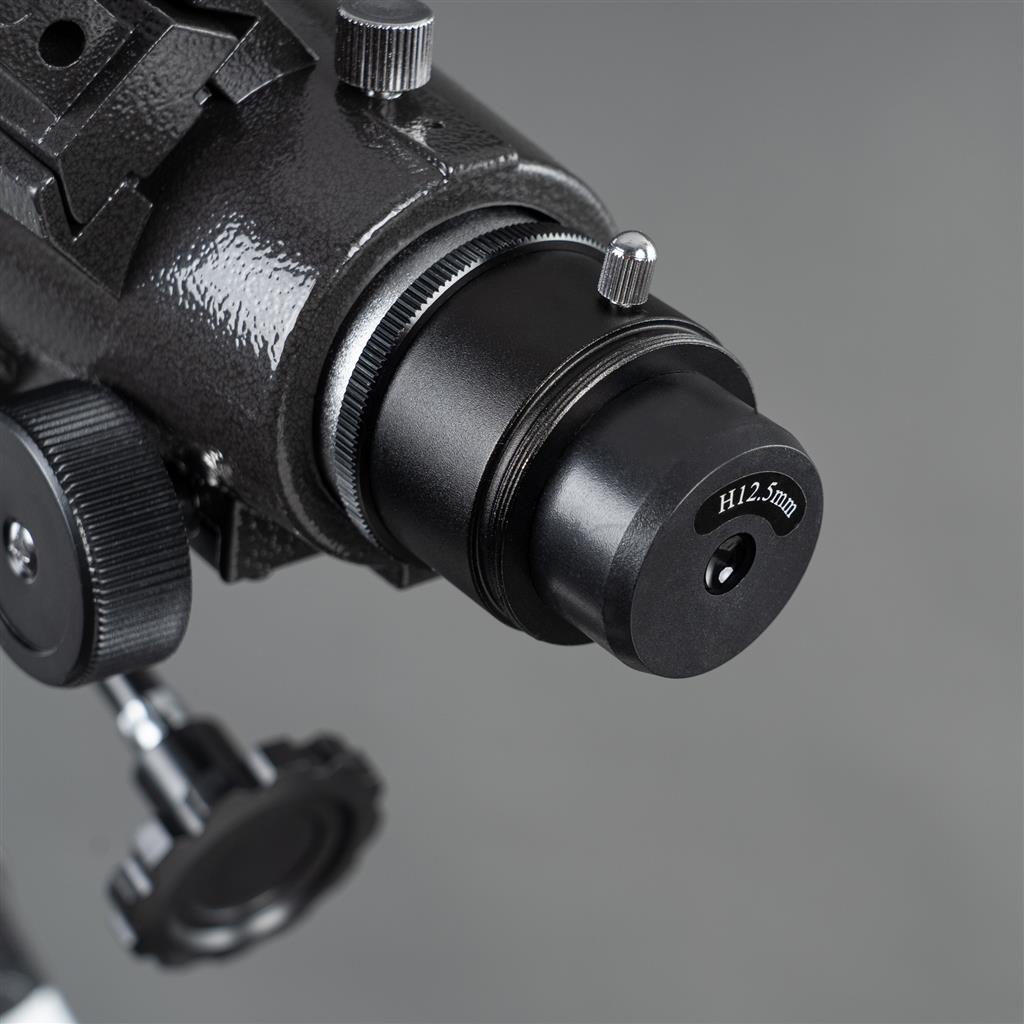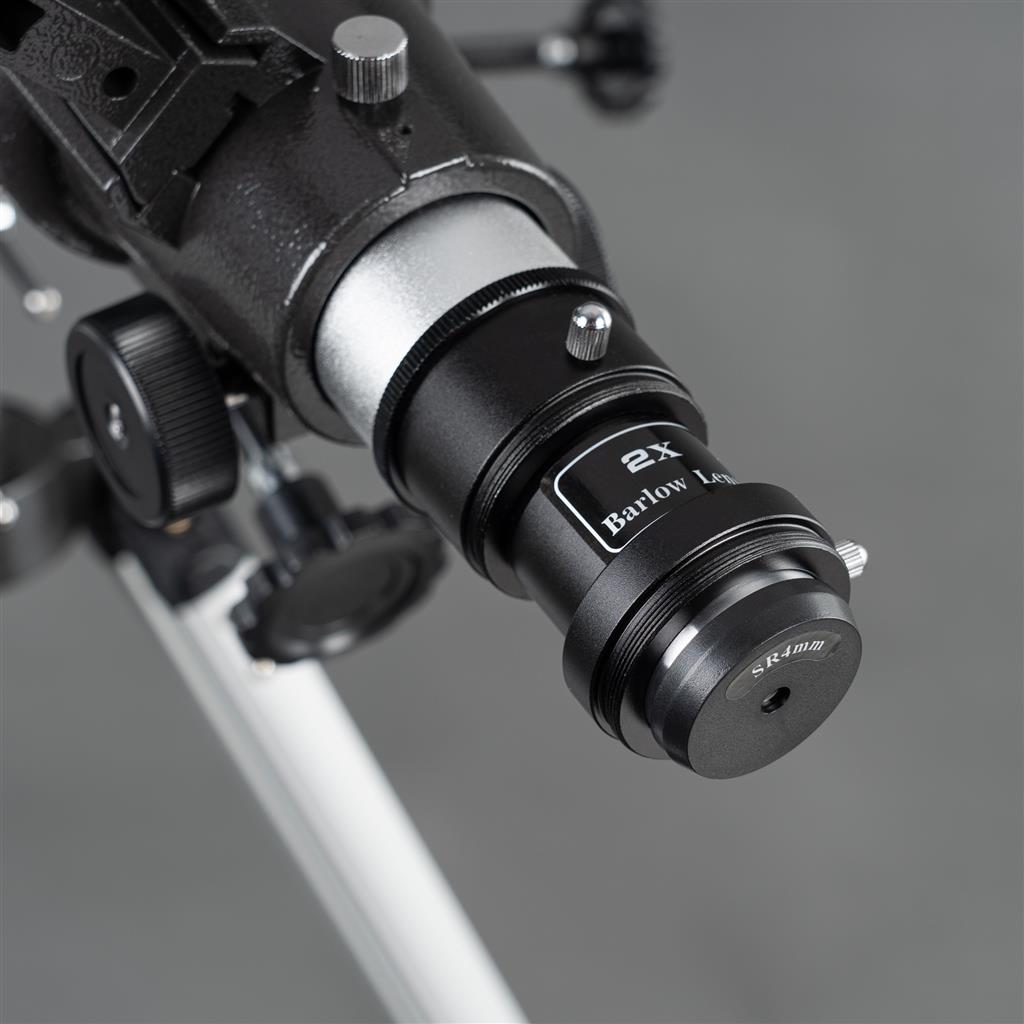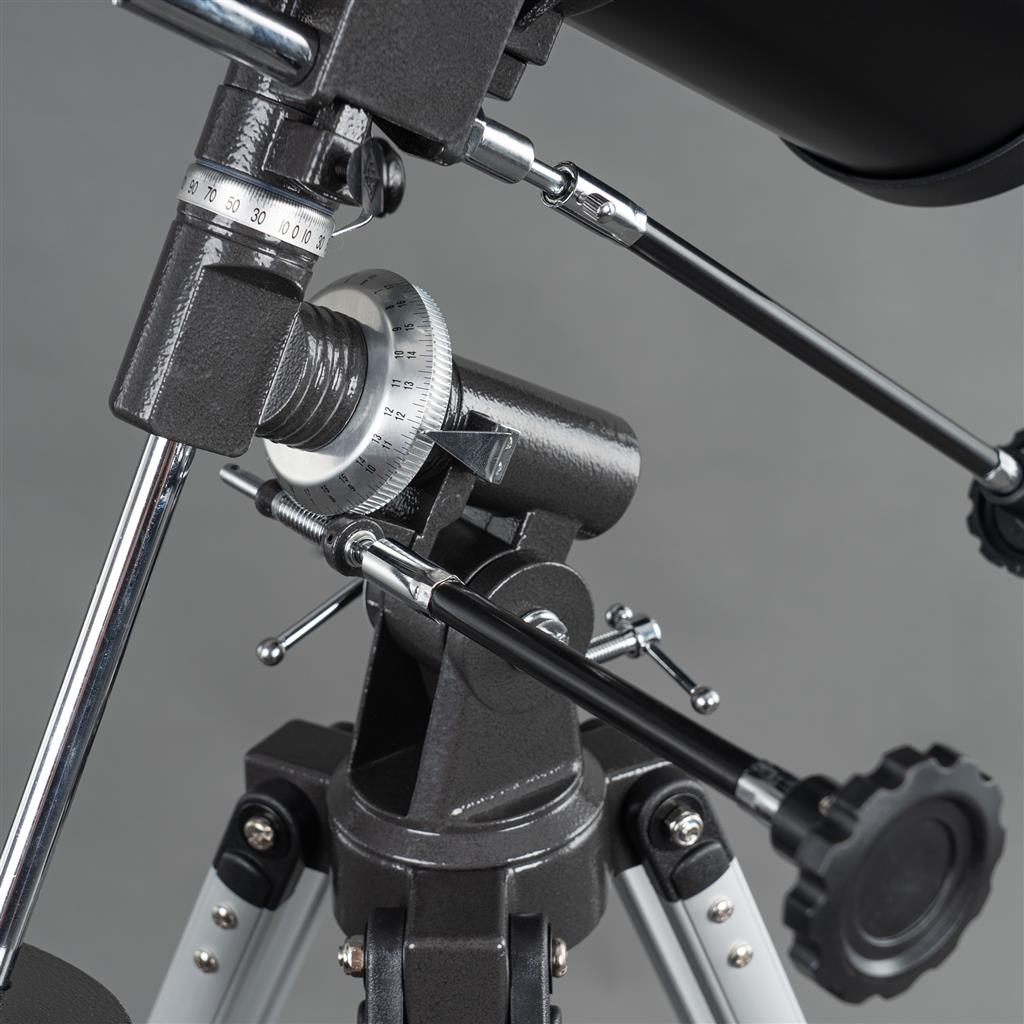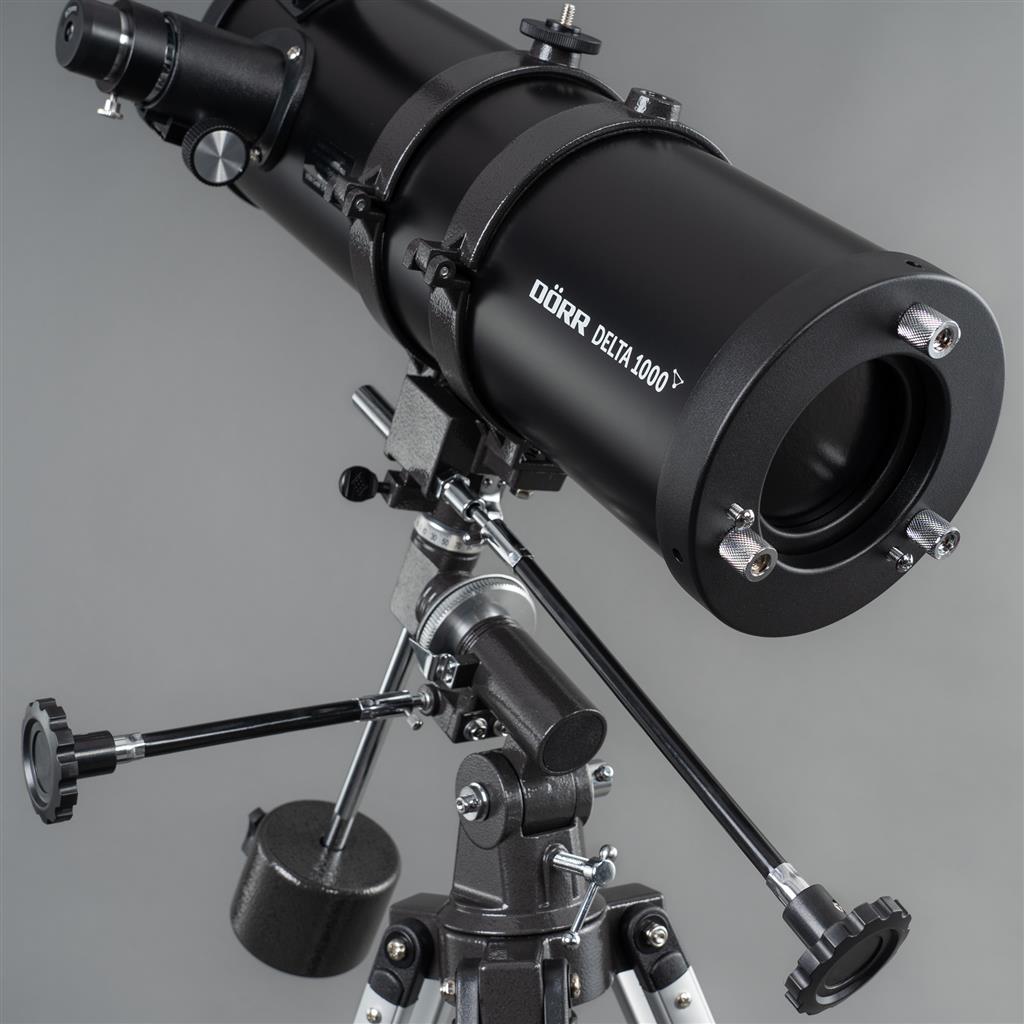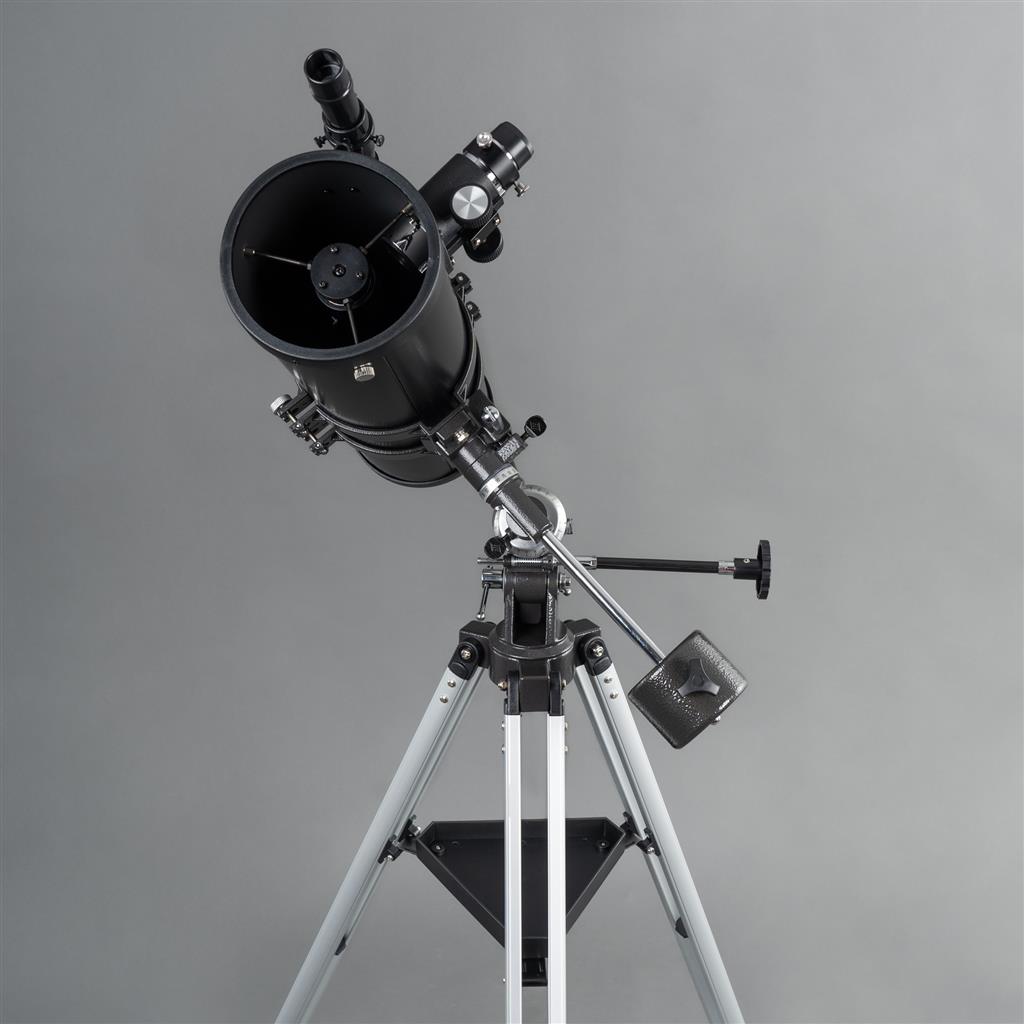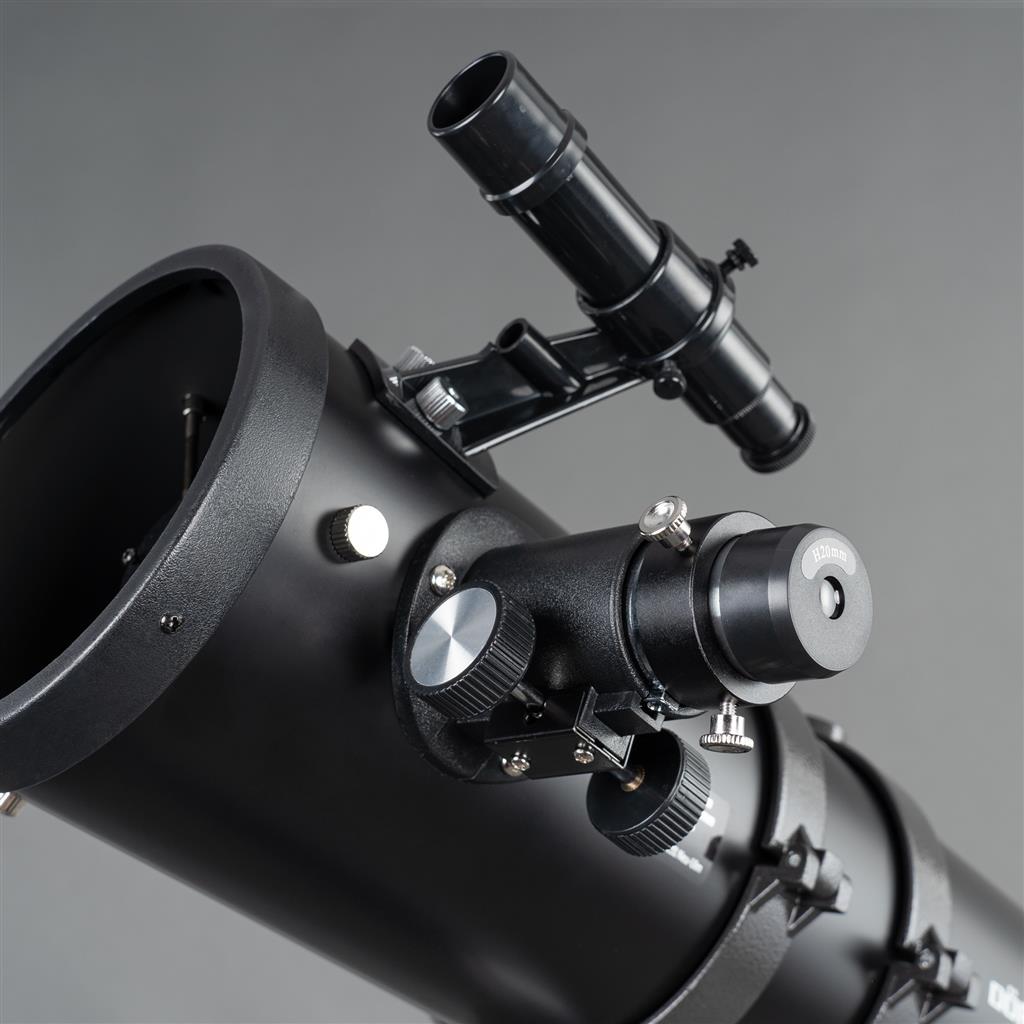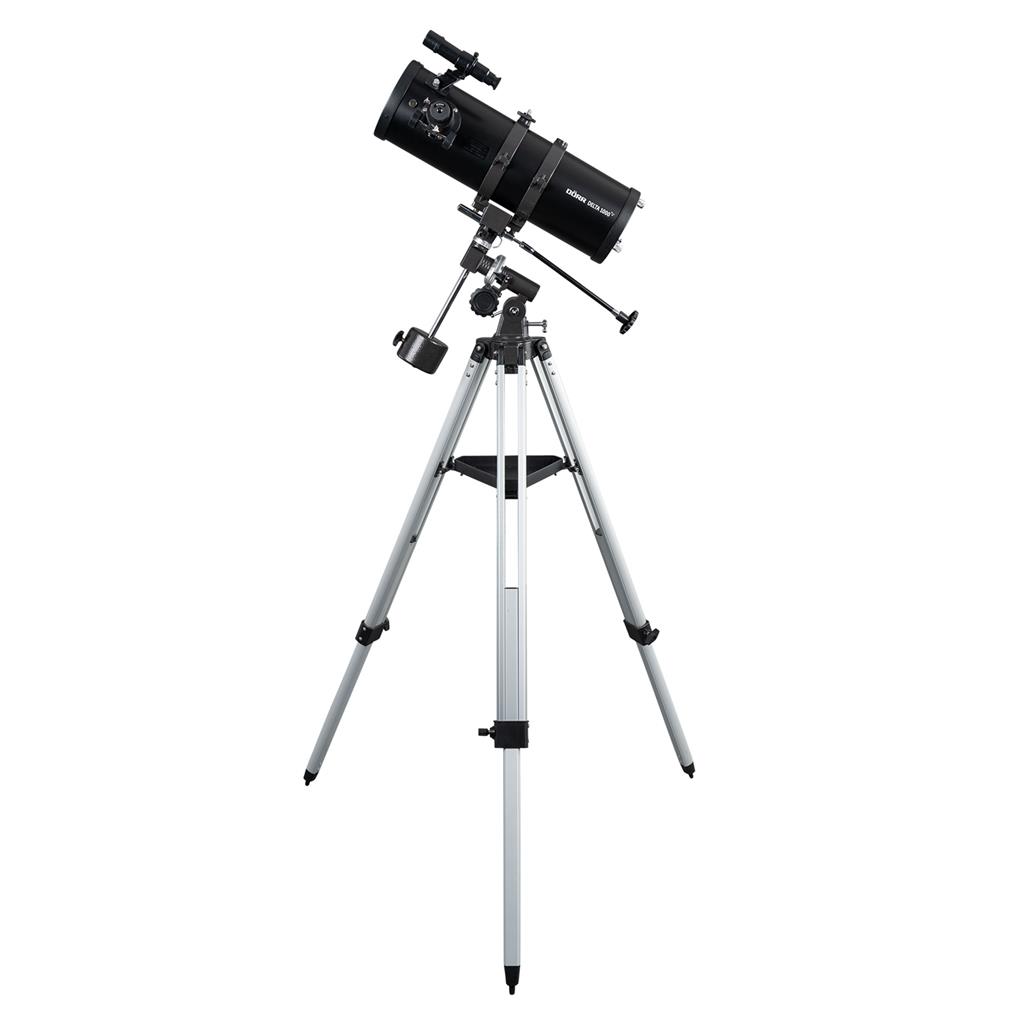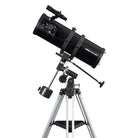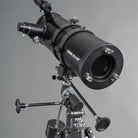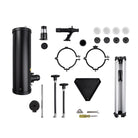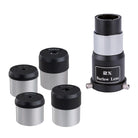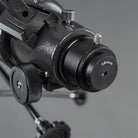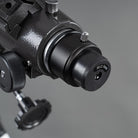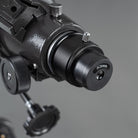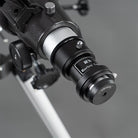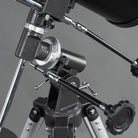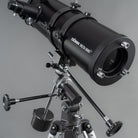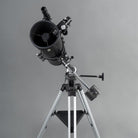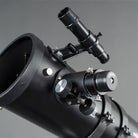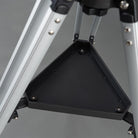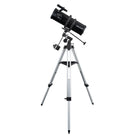Newtonian Reflector Telescope 114/1000mm DELTA 1000
DÖRR DELTA 1000 Reflector Telescope – Your Gateway to the Stars
- Newtonian reflector telescope for beginners & advanced astronomers
- 114 mm aperture & 1000 mm focal length
- Magnification 50 - 500x
- Stable EQ-1 equatorial mount with fine adjustment
- Lightweight, height-adjustable aluminum tripod
- Complete with 5x24 finder scope, 4 eyepieces, 2x Barlow lens & moon filter
- Clear, colour-true images without chromatic aberration
- Matte black optical tube – elegant and reflection-free
The fully equipped DÖRR DELTA 1000 is the ideal telescope for ambitious beginners – and a great choice for more experienced stargazers alike.
It’s sturdy, easy to handle, and comes as a complete set including tripod, EQ-1 mount, finder scope, four eyepieces, 2x Barlow lens, and moon filter.
With the DELTA 1000, you can enjoy stunning views of the Moon, planets, stars, bright nebulae, and open or globular star clusters. Even fine details such as Saturn’s rings or Jupiter’s moons become clearly visible – turning every observing night into a true cosmic adventure.
Refined Newtonian Design
The DÖRR DELTA 1000 is a classic Newtonian reflector telescope – a design that has proven itself for generations of astronomers. Despite its long 1000 mm focal length and 114 mm aperture, the optical tube remains compact and portable.
By redirecting light via a primary and secondary mirror, the Newtonian design avoids colour distortion (chromatic aberration). The result: sharp, high-contrast, colour-accurate images. Its side-mounted eyepiece allows for relaxed, comfortable viewing without awkward posture.
Because mirrors are easier to produce than lenses, the DELTA 1000 delivers excellent optical performance at an outstanding price.

Aluminum Tripod – Stable Yet Lightweight
The telescope stands on a durable aluminum tripod that combines stability and low weight – ideal for transport or quick setup outdoors. The adjustable tripod legs allow comfortable, upright observation for users of all heights.
A central accessory tray between the tripod legs keeps eyepieces and other tools neatly within reach.
EQ-1 Equatorial Mount – For Precise Tracking
The EQ-1 equatorial mount allows you to track celestial objects accurately.
Once aligned with the Earth’s axis, only a single control axis is needed to compensate for Earth’s rotation – keeping your object centred in the field of view. Fine adjustments are made manually using two flexible control cables with knobs, ensuring smooth and precise movement.
A movable counterweight and sturdy tube clamps keep the telescope perfectly balanced during observation.
Setup & Operation – Fast, Simple, Intuitive
The DELTA 1000 is designed for quick and intuitive setup. You’ll be ready to explore the night sky in minutes. Easily track your object using a single control knob, while fine focus adjustments can be made via two focusing wheels.
5x24 Finder Scope – For Quick Target Acquisition
Mounted parallel to the main tube, the 5x24 finder scope helps you locate celestial objects quickly and easily. After initial alignment, its 5x magnification provides a wide field of view, allowing you to spot your target easily and then fine-tune the focus through the main telescope.

Eyepieces – For Crystal-Clear Views
Eyepieces are a key part of any optical system. They determine magnification and influence your viewing experience.
The DELTA 1000 comes with four eyepieces featuring a standard 1.25“-barrel diameter, giving you a versatile range for various observing conditions:
- SR4 (4 mm, Super Ramsden) – double-lens eyepiece for 250x magnification*
- SR6 (6 mm, Super Ramsden) – double-lens eyepiece for 167x magnification*
- H12.5 (12.5 mm, Huygens) – double-lens eyepiece for 80x magnification
- H20 (20 mm, Huygens) – double-lens eyepiece for 50x magnification
With this selection, you can easily switch between high magnification for planetary detail and wide-field views of star clusters or nebulae.
2x Barlow Lens – Double the Magnification
The included 2x Barlow lens fits between the telescope and eyepiece to double the magnification of each eyepiece.
- SR4 → 500x*
- SR6 → 334x*
- H12.5 → 160x
- H20 → 100x
*The recommended maximum magnification for the DELTA 1000 is around 228x. Higher values are technically possible but often limited by atmospheric turbulence, which can cause image blurring.
Moon Filter – For Comfortable Observations
The supplied moon filter simply screws onto the eyepiece and reduces brightness – much like a pair of sunglasses. It provides a more comfortable, glare-free view of the full Moon and enhances contrast. It’s also recommended when observing bright planets such as Venus.
💡 Tips & Tricks
More technical details can be found under the Specifications tab. Additional Tips & Tricks for getting started are available in the Download section.
